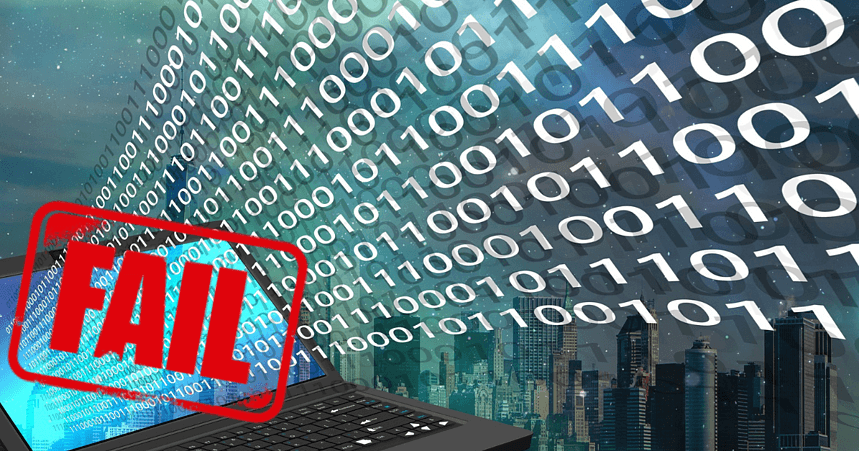Democratizing Restaurant Data to Increase Operational Efficiency
Restaurant Catherine Penizotto
Catherine Penizotto

In the past, restaurant chains were successful because of their menu, food quality, customer service, and price, but now we can add industry-focused data analytics to their recipe for success. According to Restaurant.com, there will be 5,200 GB of data for every person on earth by the year 2020, and most restaurant owners and operators aren’t using that data. Imagine collecting valuable data every time your employees enter an order into the point-of-sale system, or reviewing historical data to track menu performance, the cost of ingredients, and inform cost-saving decisions. Used correctly, restaurant data can show operators what’s happened in the past, but also help to inform decisions about the future.
Advanced data collection technologies can also streamline enterprise-wide operational efficiency by eliminating tasks like manual data entry and spreadsheet sharing. Truly democratizing restaurant data means utilizing data to benefit users at every level of the enterprise. This means delivering key insights to executive leadership, empowering operators to make informed strategic decisions, and alerting managers when important events or abnormalities occur and how best to handle the situation. For restaurant managers, every minute they’re in a back office filling out an Excel spreadsheet to send to corporate is a minute that they’re not on the floor managing their employees.
Find out how the VP of Operations at a national table-service restaurant franchise solved operational inefficiencies through the democratization of enterprise restaurant data:
Maya’s Story
Maya cleaned her glasses, an anxious habit she’s had since she was young. She again reviewed the customer satisfaction file in front of her even though she had already nearly memorized every word.
“Better to be overprepared than underprepared. These kinds of calls are never easy, but they’re necessary to keep everything and everyone on track,” she thought to herself. “Javier will understand.”
She checked the time, took a deep breath, and dialed Javier’s phone number.
“Hey Maya! How are you? It’s been a while,” Javier answered cheerfully.
“I’m good thanks. Is now still a good time to talk?” Maya responded.
“Of course, of course,” Javier quipped.
“Javier, we’ve known each other a long time so I’m just going to cut to the chase. What’s going on with your customer satisfaction? Your location is busier than ever but we keep getting complaints. Comps are up which seems to be doing damage control for now, but it’s not sustainable. I’m seeing similar trends at locations nationwide and I’m honestly at a loss for an explanation. What’s going on and what can we do to fix it?”
“I thought that’s what you were going to ask, and I’ve been trying to figure it out myself. I feel like I spend the majority of my time at my desk filling out Excel spreadsheets to send to corporate instead of training my servers, spending time with customers, running food, or helping out in the kitchen and it’s obviously having a negative impact on our performance.”
Maya considered for a moment before saying, “I understand where you’re coming from, but we need those spreadsheets to track comps, voids, and discounts in case of an audit and to identify problems.”
“I know,” Javier said, “but there must be a more efficient way to collect it.”
They went on to discuss more of the specifics of the reporting and other possible reasons for the sudden change. After they hung up, Maya couldn’t stop thinking about what Javier had said about spending his time in his office instead of on the floor where he’s needed. She was used to getting plenty of flimsy excuses for performance dips, but Javier was one of their best and she valued his feedback. As the trend of decreasing customer satisfaction and increased comps continued across other locations, Maya knew she had to find the cause of the issue.
Maya did some digging into their reporting processes to find out exactly how these reports found their way into her inbox every month. She was shocked to find that managers were required to spend hours manually filling out an Excel spreadsheet every night with total sales, voided transactions, comps, discounts, average ticket times, labor hours, and more. The huge spreadsheets were collected and compiled by a data scientist into reports which were then distributed to the appropriate stakeholders at corporate - Maya included.
“He’s right, there must be a better way,” Maya thought to herself as she wiped her glasses clean after reviewing the information she’d uncovered.
Shortly after, Maya brought up the issue to her boss Quinn, the COO of the company. With some convincing, she was tasked with finding a better way to collect and utilize transactional data that would free up their managers time. Over the next few months, she researched data analytics solutions that could streamline their operational processes and boost efficiency. After finding the best fit, she had to present the solution to her boss and the CFO to get budgetary approval.
“Currently, we’re drowning our managers in manual processes. They’re spending 2-4 hours every night manually filling out spreadsheets so that we can get the data we need to track everyday operations. But that means that they’re spending 2-4 hours a night stuck in an office instead of managing. With 20/20 Restaurant, we’ll get more data without taking them off the floor. This data can help track promotions, measure upselling, identify opportunities for training, help with loss prevention, and minimize food waste by better tracking menu performance. Our executive team can get the insights they need to make key decisions, operators can develop competitive strategies that are backed by data, and managers can receive automated alerts with prescriptive action plans when something demands their attention, freeing up their time to manage the floor. For all these reasons and more, the ROI will be substantial and immediate,” Maya concluded her presentation confidently.
Upon gaining approval, Maya went to work on managing the organizational change that the new system required. She worked with stakeholders from every affected department to make sure that the transition was as seamless as possible.
Three months after the new system went live, Maya met with Quinn for a follow-up on the implementation project results.
“I’ve got to say, we’re really making waves at every level with this project,” Quinn confided towards the end of the meeting. “I just shared some of the reporting with the board last week and everyone is very excited by this new level of transparency. They loved that we can compare regional performance and drill down into location, daypart, and even menu item. Nice job!”
Later that day, Maya called Javier to check in on his progress.
“Maya! How are you?” Javier answered cheerfully as ever.
“Good, good thanks Javier. How have you been?” Maya responded. “Has the new system helped limit your paperwork?”
“Oh yes,” Javier responded quickly. “Things are much better here since we started using it. I love receiving the alerts so that I can react to problems quickly. I can’t thank you enough for all of your help.”
Maya glanced at the reports in front of her. “I’m glad to hear it! And your customer satisfaction rate is back to normal, sales are up, comps are down… I think we’re back on track for a great year. I’m just glad we were able to find a solution that benefited everyone.”
True Data Democratization for Restaurants
Restaurants have traditionally been run largely based on gut instincts, but in the digital age, the best decisions are based on a combination of experience and data. True data democratization means that individuals at every level of the organization have access to necessary data, without gatekeepers that create bottlenecks and inefficiencies. The goal is to allow anyone to use data at any time to make decisions without barriers to access or understanding. Allowing data access to any tier of your company empowers individuals at every level to make better decisions that are backed by data.
In Maya and Javier’s case, both process and technology had created a bottleneck. The entire restaurant franchise was reliant on manual data entry, Excel spreadsheets, and Data Scientists to distribute information. By streamlining the data entry process and making restaurant data readily available, Maya was able to boost productivity, increase profits, and improve organizational decision-making.
Learn more about the impact of democratizing enterprise data analytics for restaurants by downloading our eBook, “Data-Powered Dining.”
Related Articles

The Psychology Behind Business Dashboards
Within the past decade, dashboards have become an increasingly popular way for businesses to internally display data. But, wh...
Tips for Creating an Enterprise-Wide Data Strategy
A business’ performance and competitive capacity depends largely on how successful they are in managing their data. Having a ...
6 Ways to Ensure your Data Analytics Efforts Fail
In late 2017, Gartner revealed that about 60% of big data analytics and business intelligence projects fail to move past the ...Subscribe to our blog
Receive free educational resources like exclusive reports, webinars, and industry thought leadership articles straight to your inbox.


